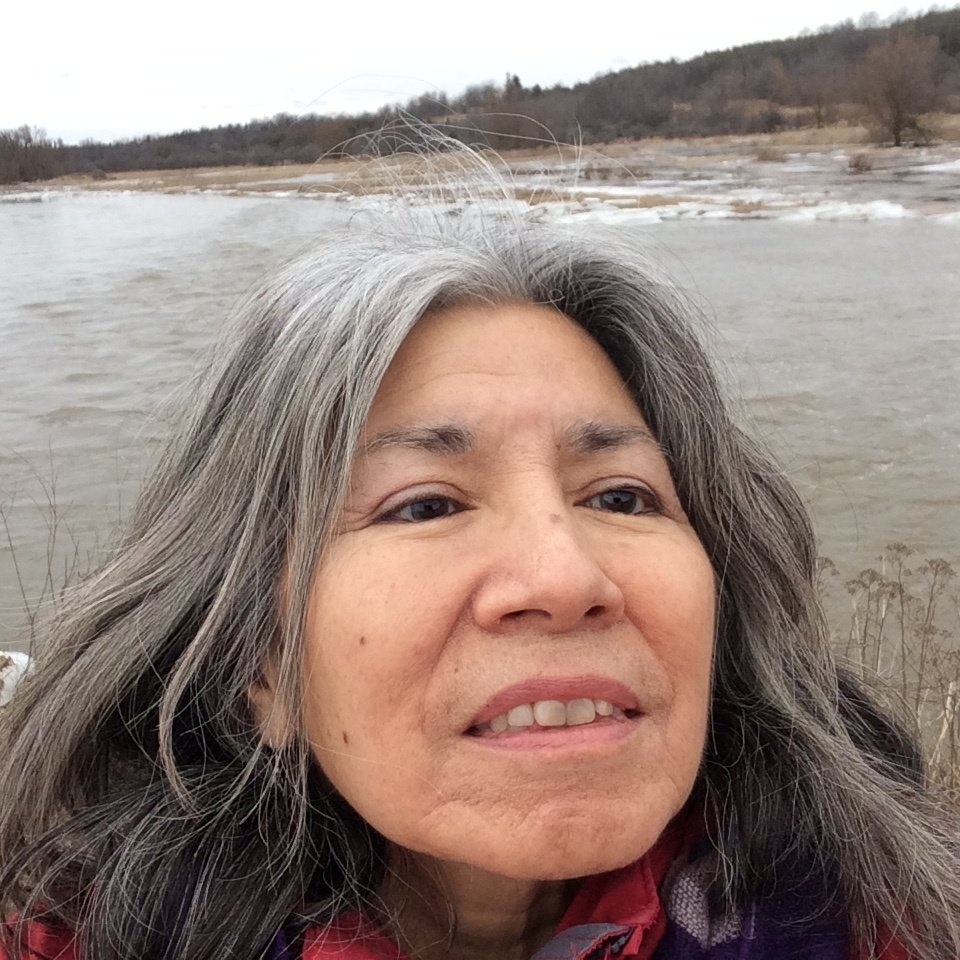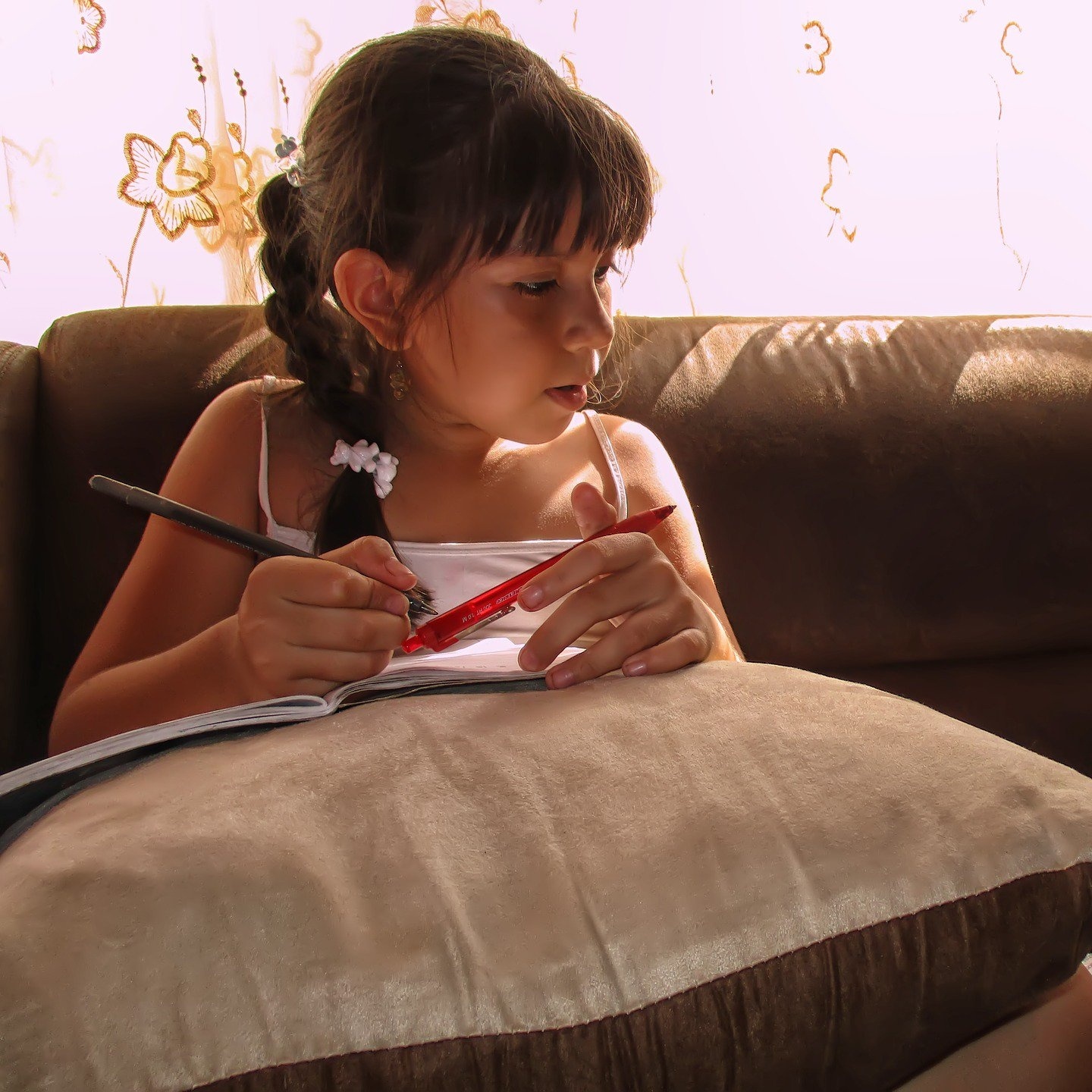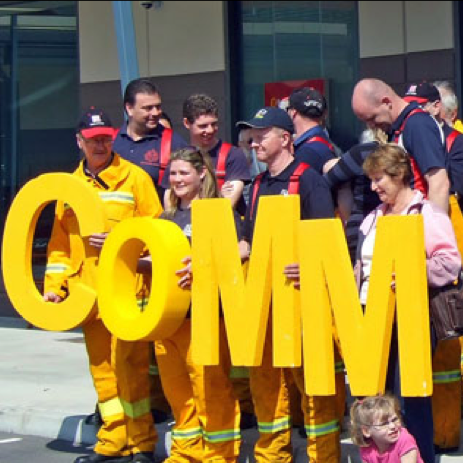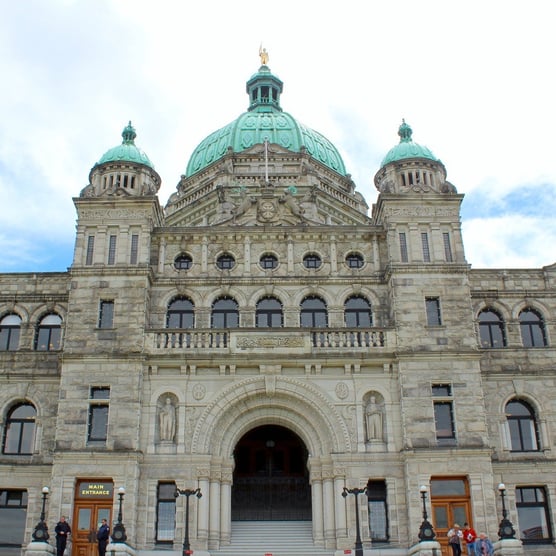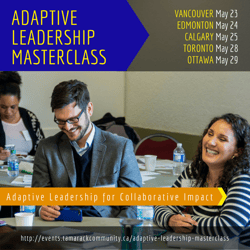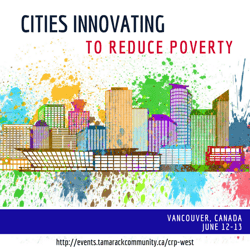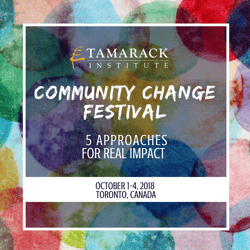Tamarack Institute | May Edition, 2018
In this Issue:
- This is Community Innovation
- The Path to an Inclusive and Accessible Community
- The Intersection of Strategy and Leadership
- Co-creating Innovative Strategies for Indigenous Employment
- Nurturing Context Experts: Building a Network of Non-Traditional Leaders
- The Latest from the Field
- Upcoming Events You Won't Want to Miss
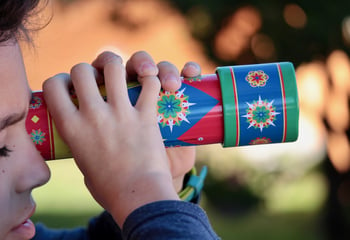 This is Community Innovation
This is Community Innovation
BY: GALEN MACLUSKY
Community Innovation is simply: Change, for good, with and within a community. In other words, Community Innovation is a community-championed change with benefits that are meaningful to the community. How we shepherd and achieve positive change is a decidedly more complex task, and at the Tamarack Institute we hope to equip changemakers at all levels to engage in and support Community Innovation.
What makes Community Innovation different from other forms of Social Innovation is the focus on community – placing community members as both the champions and as the arbiters of change. The distinction between Social Innovation and Community Innovation is important because Community Innovation processes draw upon important assets that are unique to space and place – assets which create the opportunity for different ways of working. These assets are often seen as afterthoughts or as ‘nice-to-haves,’ but they are core to the work of Community Innovation. They include:
- Local knowledge and context - the collective experience and wisdom held within a community
- Bounded scale and specificity - a narrower focus that can facilitate innovation and action
- Connection to outcomes - informal mechanisms and networks that let us know how our community is changing
- Space and place for exploration - a ‘living lab’ environment that enables rapid prototyping and engagement
- Community members - the people within our communities, beyond employees and volunteers, who come together to work for positive change
Read the just released article This is Community Innovation by Galen MacLusky, Tamarack’s Director of Community Innovation, to learn more about why innovation with and within community is critically different from other types of Social Innovation, as well as how the Tamarack Institute will continue to explore and support this particular form of innovation.
Learn More:
- Read the full article This is Community Innovation
- Explore the forces driving social innovation in Canada in Sylvia Cheuy’s paper: The Community Innovation Imperative
- Get in touch with Galen at galen@tamarackcommunity.ca
Share this article:
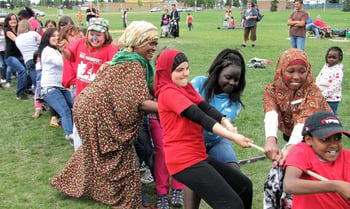 The Path to an Inclusive and Accessible Community
The Path to an Inclusive and Accessible Community
BY: HEATHER KEAM
Being part of a community means that everyone no matter what ability, can enjoy all that it has to offer. If communities are not planned or built with an accessible lens, people with disabilities cannot be fully involved and thus the community suffers.
I recently read a blog by Jim Diers about building inclusive communities, in which he states, “Communities are at their best when they are inclusive, a quality that seems to be in short supply these days. There is so much stereotyping and polarization with people divided by politics, religion and culture.” Jim talks about the potential of place-based communities that include people with differences - whether those are defined by interest, age, politics, religion, income, race, culture, sexual orientation, abilities, employment, or housing status.
Cities are taking the lead across Canada and developing Accessibility and Inclusion policies, and one great example of this is in Kamloops, B.C. The City of Kamloops recognized that, while there has been a lot of great work done to address accessibility and inclusion, there needed to be a formalized policy to support future planning for improvements and resources enabling access and inclusion.
To facilitate the development of their strategy, The City took part in Tamarack Institute’s Local Deepening Community Initiative, holding deep, intentional conversations with City staff and the community, in order to guide the development of an accessibility and inclusion policy for the city. From these conversations, they identified community priorities and used them to determine collective community action to promote and transform Kamloops into an ever more inclusive and accessible community.
Four themes and their associated goals identified for improved accessibility and inclusivity in Kamloops, B.C.:
- Accessible services and programs: City services and programs are accessible for a full range of abilities
- Accessible built environment: Continue to increase and improve accessibility in our community
- Accessible transportation: Continue to maintain and improve accessible transportation options
- Accessible employment: Continue to support labour participation for people with disabilities
Learn More:
- Read the Case Study about the community conversation process used by the City of Kamloops and the four themes and goals that emerged
- Read Jim Diers’ blog on building inclusive communities
- Learn more about Tamarack's Local Deepening Community Initiatives
Share this article:
 The Intersection of Strategy and Leadership
The Intersection of Strategy and Leadership
BY: LIZ WEAVER
My colleague Mark Cabaj recently released an article on ‘What we Know So Far About The Strategy Continuum' that is helpful on many fronts. In the article, Mark identifies a strategy continuum and describes three different approaches to employing strategy: from engaging in emergent strategy development, to employing umbrella strategies, to deploying a detailed strategy. The article details strategy in a way that recognizes that not every complex problem requires a similar strategic approach. It builds on the work of strategy expert Henry Mintzberg and provides real time examples of deploying different strategy approaches in the context of different community contexts. The article also provides resources for community change practitioners to dive deeper on each approach to strategy.
The Strategy Continuum is a useful resource for leaders. Complex community challenges require that leaders have a variety of tools in their tool box which can be adapted to different contexts. The Strategy Continuum can be viewed as the intersection between strategy and leadership. It does not provide a recipe or formula to follow but rather provides approaches, knowledge and ways of thinking about strategy. In many ways, deploying strategy in a complex change environment requires an adaptive leadership approach, getting to a deeper understanding of the context and then identifying how to deploy resources in a way that can influence and have an impact.
A 2012 Forbes Magazine article, Leadership 2.0: Are you an Adaptive Leader? by Travis Bradberry identified that great leadership is dynamic and that it melds a unique set of skills into an integrated whole. Bradberry identifies core leadership skills as focusing on strategy, action and results. He defines adaptive leadership as a combination of skills, perspectives and guided effort including employing emotional intelligence, organizational justice, character and developing of self and others.
When reflecting on the writing of both Cabaj and Bradberry, it seems that both adaptive and core leadership skills and perspectives are useful to consider and employ when tackling challenging and complex problems. Not only does a leader need to focus on strategy, action and results but they have to do this within a changing community context which requires them to bring forward emotional intelligence, justice and character.
In May 2018, Tamarack Institute is hosting Liz Skelton of Collaboration for Impact, Australia. Liz will be leading a series of workshops on Adaptive Leadership in partnership with Tamarack. These workshops will explore how to build competencies in becoming an adaptive leader building on different tools, resources and references.
Learn More:
- Read the article Leadership 2.0: Are You an Adaptive Leader?
- Download Mark Cabaj's article What We Know So Far About The Strategy Continuum
- Learn more about the upcoming Adaptive Leadership Masterclass with Liz Skelton and Liz Weaver
Share this article:
 Co-creating Innovative Strategies for Indigenous Employment
Co-creating Innovative Strategies for Indigenous Employment
BY: ERIKA WIEBE AND ALISON HOMER
The Winnipeg Poverty Reduction Council (WPRC) provides backbone support to TRC92: Youth Employment, by bringing sectors together in a Collective Impact effort, and by engaging in on-going research, evaluation and consultation.
TRC92: Youth Employment is guided by the 92nd Call to Action in the 2015 Truth and Reconciliation Commission Report which calls upon the corporate sector to:
“...ensure that Aboriginal peoples have equitable access to jobs, training, and education opportunities in the corporate sector and....provide education for management and staff on the history of Aboriginal peoples, including the history and legacy of residential schools, the United Nations Declaration on the Rights of Indigenous Peoples,Treaties and Aboriginal rights, Indigenous law, and Aboriginal-Crown relations... (and conduct) skills-based training in intercultural competency, conflict resolution, human rights, and anti-racism.”
TRC92: Youth Employment incorporates three strategies:
- Build awareness among private-sector employers about Indigenous history and legacy in relation to Indigenous youth employment;
- Support workplace education about Indigenous history, and intercultural safety and anti-racism; and,
- Facilitate new connections for work experience and employment by linking employers and youth from community-based training partners.
Delivery of this work is realized through partnerships with ten community training organizations and twelve private sector employers, who form an Employer Consortium. The Employer Consortium is led by Dave Angus, former CEO of the Winnipeg Chamber of Commerce and current President of Johnston Group.
Angus describes the aim of the Employer Consortium as “engaging in a journey toward truth and reconciliation, incorporating business-to-business learning.” The group works with the Indigenous community and other partners to co-create innovative strategies that can be tested and shared with others to work toward large-scale employment of Indigenous people in Winnipeg.
The Consortium meets regularly to plan and learn together, often bringing in guests who share learning on topics related to Indigenous youth employment. The consortium builds relationships with community trainers, engages in learning opportunities about Indigenous history, and plans to deliver training to their existing workforces.
Recognizing that employer commitment via top leadership is essential to instil commitment throughout the workforce, in March 2018 Human Resource leads of the Employer Consortium were joined by their CEOs and senior leaders for a morning session at the National Centre for Truth and Reconciliation (NCTR) with Kevin Lamoureux, National Education Lead at the NCTR.
“I left the session feeling quite emotional – a raw reminder of my privilege and as (Kevin) stated, deep anger of broken promises. Having two Indigenous sisters I have witnessed the impact of the residential schools and the Indian Act and being a mother and grandmother, I cannot fathom the scars that have been created for 7 generations as a result of our ancestors. But I also left hopeful for the future, that the time is now and that we all need to step up and make it our business to set the future right and repair this partnership. I commit to spending reflective time considering the TRC call to action and what next steps might look like for me personally and for Birchwood.”
- MaryAnn Kempe, Chief Human Resources Officer, Birchwood Automotive
Implementation of TRC92: Youth Employment is a step-by-step learning journey. In coming months, the WPRC will work with the Employer Consortium to plan for workforce training, strengthen relationships with community partners and youth, and explore strategies to engage youth in their workplaces.
The WPRC monitors progress, seeks out resources, ensures on-going communication and consults regularly to support the implementation of TRC92: Youth Employment.
Cities Innovating to Reduce Poverty
The Winnipeg Poverty Reduction Council (WPRC) is one of over 60 Vibrant Communities Canada - Cities Reducing Poverty members working locally and collaboratively to reduce poverty in their communities across Canada. Anyone interested in learning more about innovative place-based strategies to end poverty is welcome to join Vibrant Communities for this year's western regional poverty reduction summit - Cities Innovating to Reduce Poverty, Vancouver B.C., June 12-13, 2018.
[Photo: The Bentwood Box - Which accompanied the Truth and Reconciliation Commission across Canada and is on display at the National Centre for Truth and Reconciliation, based in Winnipeg]
Learn More
- Read the WPRC 2018 Update to the Community
- Learn more about this initiative in this webinar TRC #92: Youth Employment in Winnipeg
- Read the 2015 Truth and Reconciliation Commission Report
- Learn more about WPRC through the WPRC website or follow on Twitter
- Register for the Cities Innovating to Reduce Poverty summit in Vancouver, BC
Share this article:
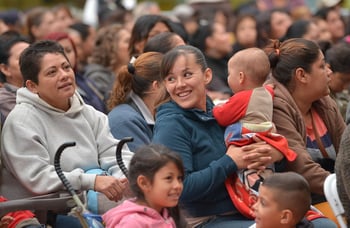 Nurturing Context Experts: Building a Network of Non-Traditional Leaders
Nurturing Context Experts: Building a Network of Non-Traditional Leaders
BY: PHYLLIS ALEXANDER & HASSHAN BATTS
January 2018 marked the launch of an innovative new approach to mobilizing non-traditional leaders – those context experts whose wisdom, knowledge and action is essential to the success of any sustainable community change effort. Leadership Without Limits (LWL) was created in response to the observation made by Promise Neighborhood of the Lehigh Valley (PNLV) that “the leaders we have are not the leaders we need and do not represent the community.” LWL has been designed to address this leadership gap by preparing emerging leaders to lead effectively with integrity in this 21st century multi-cultural society.
Unlike other resident leadership programs that work with residents “closest to the pain” and focuses heavily on understanding and impacting systems through advocacy, the residents recruited for Leadership Without Limits were people who have made it out of the pain, but still have a heart and connection for the community. LWL participants were chosen because they have an interest in running for office; being the CEO of a major local institution; and/or establishing the non-profit of their heart.
Twenty-four resident leaders from LWL’s first cohort each demonstrated a hunger to improve their leadership skills, the availability to attend the 8-week leadership classes, a commitment to giving back to their community, and a willingness to be in both learning and teaching mode. We chose students who knew they had a lot to learn and a lot to share. A majority of the individuals who completed LWL’s first class are millennials however the class was truly intergenerational with ages ranging from 20 – 60.
The design of Leadership Without Limits reflects the belief that leaders lean into their vulnerability, rather than hide it. For example, one of the questions on the application was: What do you need to heal within yourself so you may be the best leader possible? Another unique design feature is that the program’s co-leads are full participants in the program with their students.
Promise Neighborhoods of Lehigh Valley, who led the development of LWL’s curriculum, did so in relationship with the community. The design included two advisory groups. The first advisory group consisted of seasoned community organizers. The second advisory group included community leaders and champions including: the Allentown School District Superintendent; a number of profit and non-profit CEOs, academics and funders. The Leadership Without Limits curriculum has three phases:
- Self-Discovery, Information & Support – This phase includes the interviewing and selection applicants who then participant in 8 weeks of leadership classes that begin with a one-day Storyhealing session recognizing that writing, telling and performing a story of importance from your life is informative and instructive for self and others. The Storyhealing session ends with an evening performance for more than 100 residents of the community where participants shared these stories. Phase one also includes a mentoring component with each student receiving three months of one-on-one support from a mentor who currently plays a leadership role within the community.
- Community of Practice (Courage and Vulnerability) – During this phase students attend monthly meetings where they are expected to both lead and contribute. Membership in the Community of Practice include students from the class and the general public, which can include seasoned leaders and dignitaries. It is an opportunity to practice leadership amongst friends and those the student admires. Facing your peers and those you admire, takes courage and the willingness to be vulnerable. These are leadership characteristics that must be practiced if one is to internalize them.
- Fireside Chats (Demonstration of Excellence) – These quarterly talks feature guest speakers – leaders who lead without limits – individuals of distinction and excellence whose stories inspire and provoke our LWL graduates to think creatively, boldly, and fearlessly about ways to make an impact. These guests inspire our students to look beyond what they know to imagine what can be; share innovative ideas and lessons learned by experience; and, introduce our emerging leaders to fellow changemakers who become part of their own network and remind them they are not alone.
The tagline for Leadership Without Limits – An investment in you is an investment in the world – is both an affirmation and a challenge to this growing network of non-traditional leaders. Our neighbors and communities need their passion, their wisdom and their leadership. The Leadership Without Limits initiative also reminds us that the meaningful participation of context experts in community change efforts requires deliberate thought, investment and infrastructure to become a reality.
Learn More:
- Watch this video to learn more about Lehigh Valley’s Leadership Without Limits Initiative
- Visit the Leadership Without Limits Webpage
- Register for Cultivating Leadership Without Limits a webinar with members of Lehigh Valley’s Leadership Without Limits Initiative on May 24th
- Learn more and register now for Tamarack’s Adaptive Leadership Masterclass taking place in five cities this May
Share this article:
WALKING FOR WATER: WALKING FOR LIFE
By: Mary Anne Caibaiosai
Read the Post
IMPROVING PATIENT SAFETY THROUGH NATIONAL COLLABORATION
By: Hina Laeeque
Read the Post
BUILDING CAPACITY, BUILDING COMMUNITY
By: Liz Weaver
Read the Post
ONTARIO MAKING PROGRESS ON CHILD POVERTY
By: Adam Vasey
Read the Post
STARTING WITH WHAT'S STRONG, NOT WHAT'S WRONG
By: Rebecca Byers
Read the Post
CHANGE IS ON THE HORIZON - POVERTY REDUCTION IN BRITISH COLUMBIA
By: Jill Zacharias
Read the Post
Adaptive Leadership Masterclass: Adaptive Leadership for Collaborative Impact
Vancouver, BC | May 23
Edmonton, AB | May 24
Calgary, AB | May 25
Toronto, ON | May 28
Ottawa, ON | May 29
This intensive Masterclass will equip you with the tools, processes and, most importantly, the leadership practice to make a real and meaningful change through your own collaborative initiative.You will learn how to apply adaptive leadership principles and practices to your collaborative initiative while demonstrating its relevance and application to system, organisational, community and personal challenges.
Cities Innovating to Reduce Poverty
June 12-13, 2018
Vancouver, BC
We are at a unique moment in history in which Cities, Provinces and our Federal government are all converging with independent, and yet interrelated, poverty reduction strategies. This gathering seeks to harness this distinctive synergy and facilitate learning and dialogue toward innovative solutions.
Join us to hear from fabulous speakers, participate in experiential city tours, and work together through interactive workshops in one of the most beautiful cities in the world. Together, we will celebrate our successes and will co-generate impactful solutions to eliminating poverty nationwide.
Community Change Festival
October 1-4, 2018
Toronto, ON
Over 4 days, explore the 5 competencies every changemaker needs to move from ideas, to practice, to impact. Through workshops, open space dialogue, tools, immersive tours, and peer input processes, go deep into one approach or advance your skills in each.
Who Do You Choose To Be? Leadership as a Noble Profession
Speaker: Margaret Wheatley
Date: May 23, 2018 | 1:00 - 2:00 p.m. EDT
Cultivating Leadership Without Limits
Speaker: Phyllis Alexander and Hasshan Batts
Host: Sylvia Cheuy
Date: May 24, 2018 | 1:00 - 2:00 p.m. EDT
When Collective Impact has an Impact
Join us for a series of webinars dedicated to exploring ORS Impact and the Spark Policy Institute's report When Collective Impact has an Impact, the Canadian Collective Impact initiatives mentioned in the report, and implications for Tamarack's Vibrant Communities members.
You can find the information for each of the remaining sessions of this webinar series below:
- Getting to Impact: Canadian Collective Impact Case Studies | May 8, 2018
- Getting to Impact: Lessons Learned from Vibrant Communities Canada | June 7, 2018
